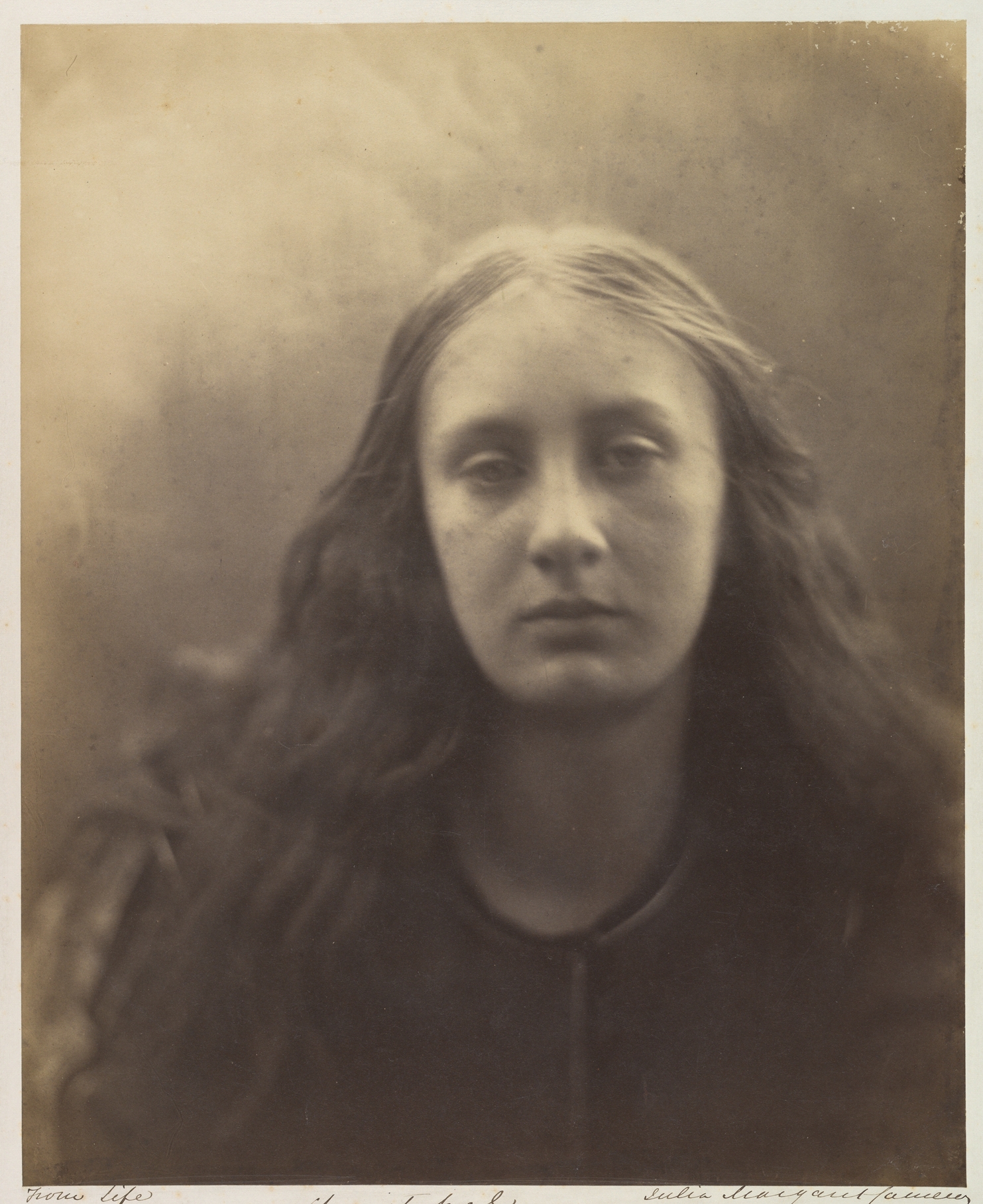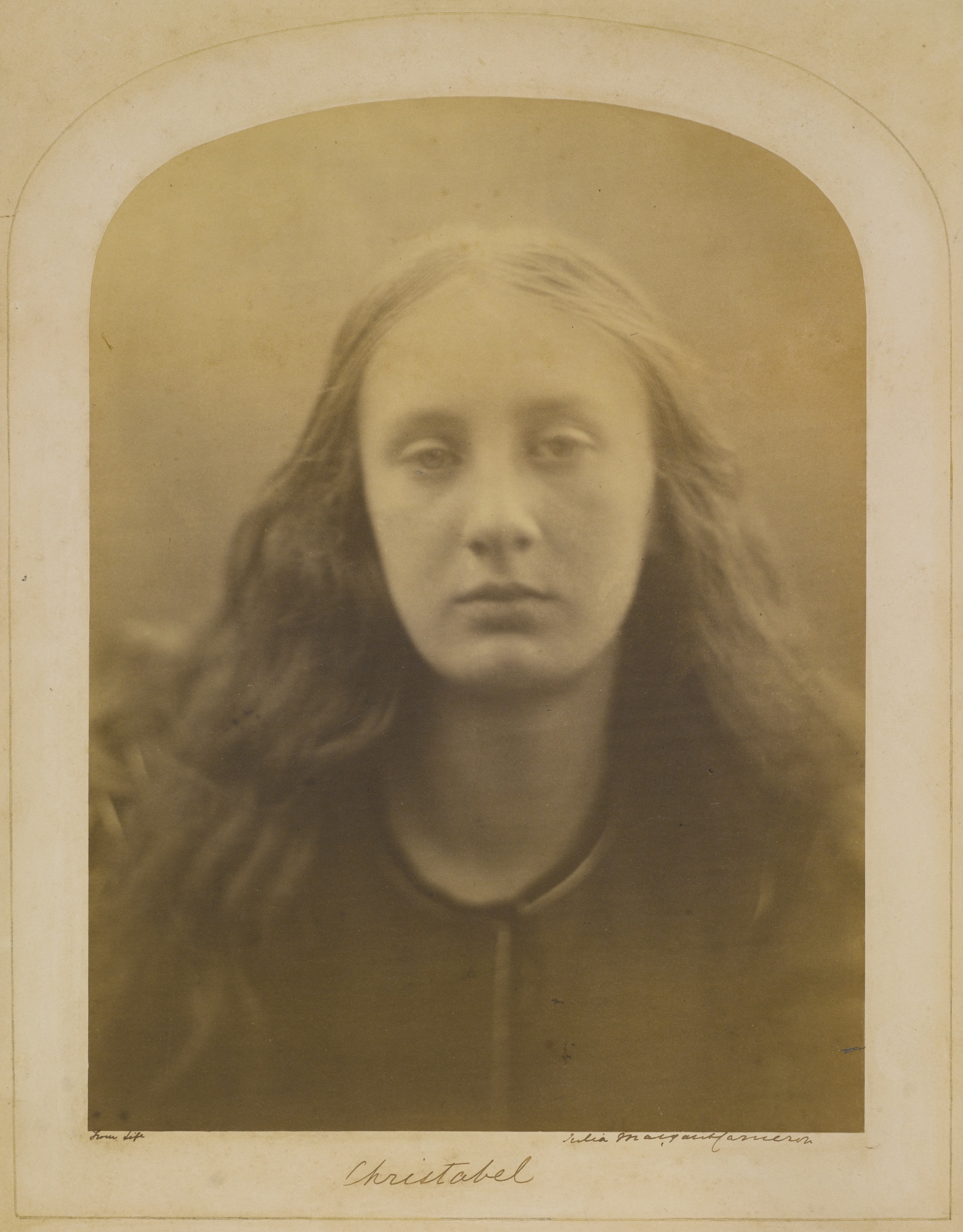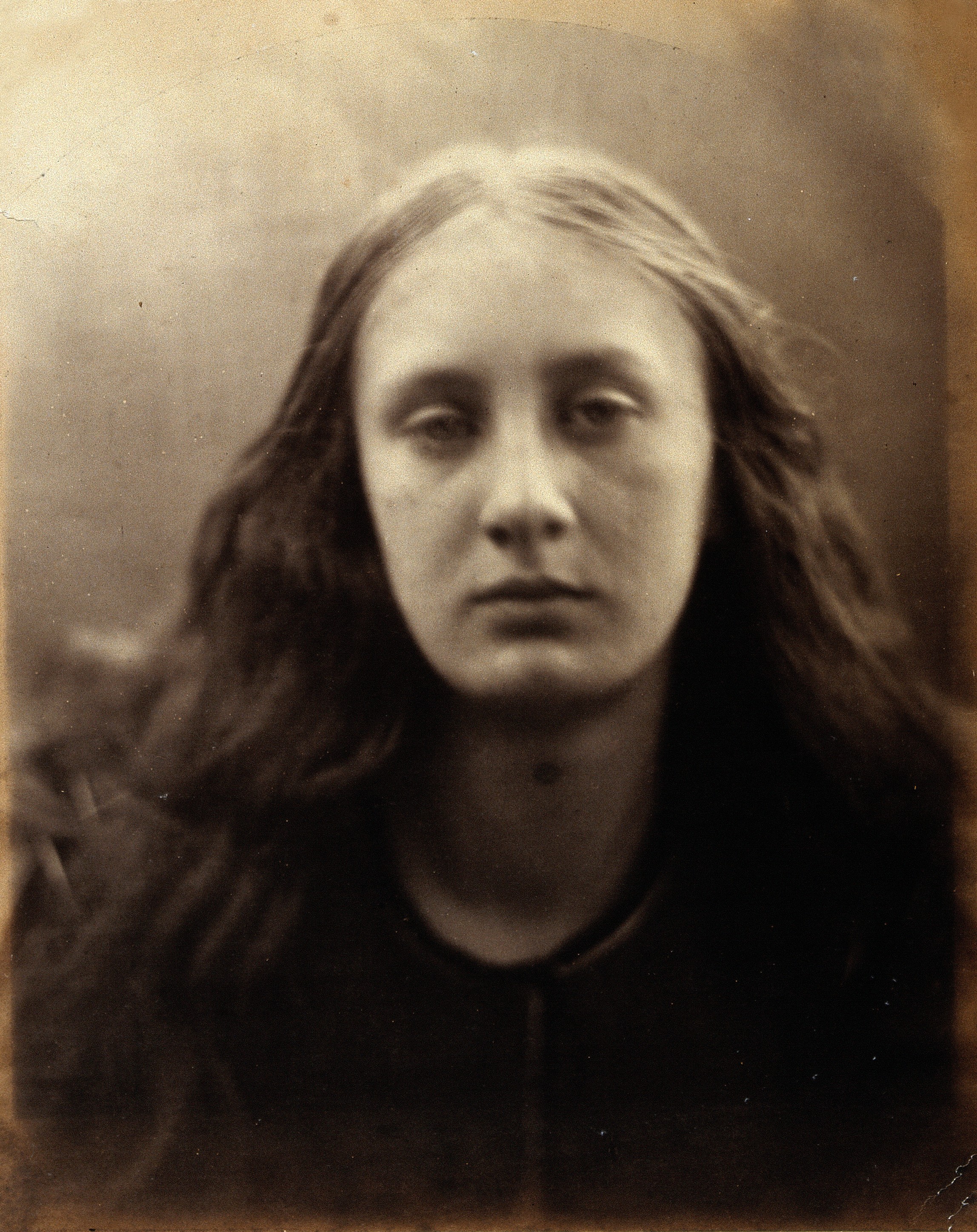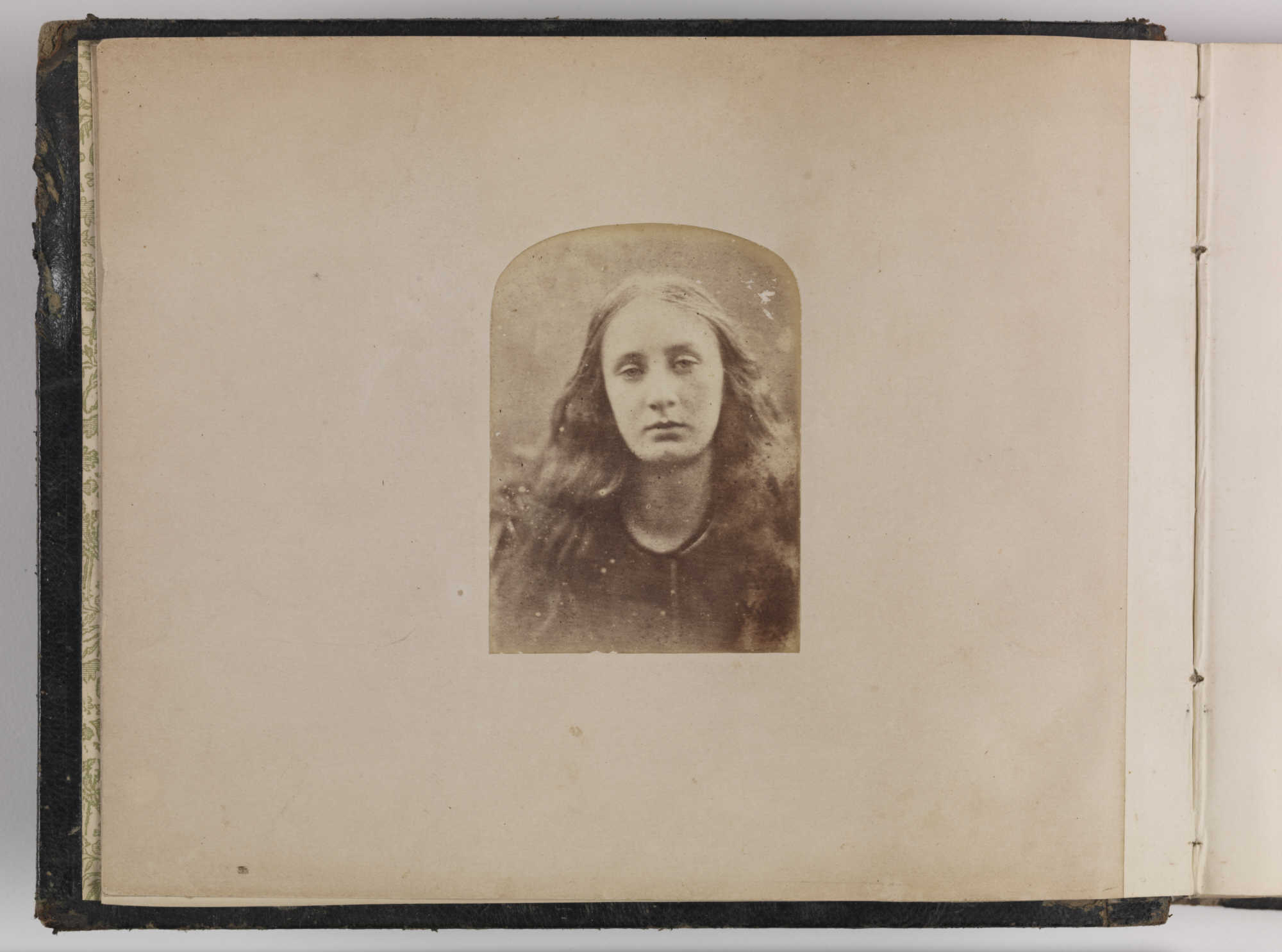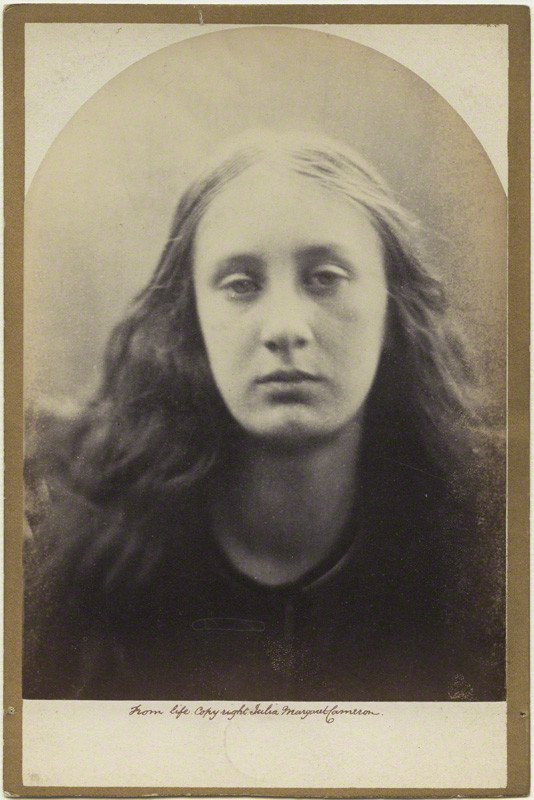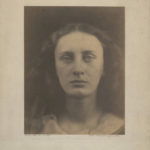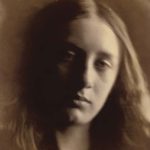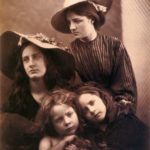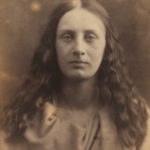Mary Emily (‘May’) Prinsep (1853-1931) as Christabel by Julia Margaret Cameron, 1866
On this photo May was just thirteen years old, yet she looks wise beyond her years.
photo 1:
Albumen silver print from glass negative, MET Museum
photo 2:
Albumen print, arch-topped, on a gilt-ruled Colnaghi mount, signed, titled, and annotated ‘from life’ in ink and with the Colnaghi blindstamp on the mount, Sotheby’s
photo 3:
Wellcome Trust Library
photo 4:
National Media Museum (Cameron compiled this album in 1869 for her son, Hardinge Hay Cameron. It contains 112 miniature prints of her larger works – portraits of famous men, fair women, literary scenes and religious images).
photo 5:
Albumen print on gold-edged cabinet. National Portrait Gallery.
Christabel:
“Yea, she doth smile, and she doth weep,
Like a youthful hermitess,
Beauteous in a wilderness.”
Coleridge’s unfinished poem “Christabel” (1816) tells the story of a young woman debased by sorcery. A dark poem, full of rolling fog and lesbian innuendo, “Christabel” was the kind of tale that appealed to the Victorian palate–a soup of sexual transgression and moral repair. Cameron rarely made portraits of women; rather, when she photographed them, they appeared as representations of some biblical, mythological, or literary figure. Cameron’s niece, May Prinsep, who would later marry Hallam Tennyson, son of the poet laureate, appears here as the ethereal Christabel before her corruption. Cameron’s long exposure time and distinct soft-focus technique lend the work its idealizing gravitas even while, paradoxically, intensifying the realistic presence of the individual before the lens. For all her “high art” aspirations, Cameron was always quick to note that her images were “from life.”
Literature:
Julian Cox and Colin Ford, Julia Margaret Cameron: The Complete Photographs (The J. Paul Getty Museum, 2003), 302 and 396
Colin Ford, The Cameron Collection: An Album of Photographs by Julia Margaret Cameron Presented to Sir John Herschel (The National Portrait Gallery, London, 1975), pl. 67, pg. 90
Sylvia Wolf, et al, Julia Margaret Cameron’s Women (The Art Institute of Chicago, 1998, pls. 21 and 56
Mike Weaver, Julia Margaret Cameron, 1915-1879 (John Hansard Gallery, The University, Southampton, 1984), I.37, p. 48
Julia Margaret Cameron: An Album (Lunn Gallery/Graphics International Ltd., 1975), pl. 45
.
source: Metropolitan Museum of Art, Sotheby’s, Wellcome Trust, National Media Museum, National Portrait Gallery
,

